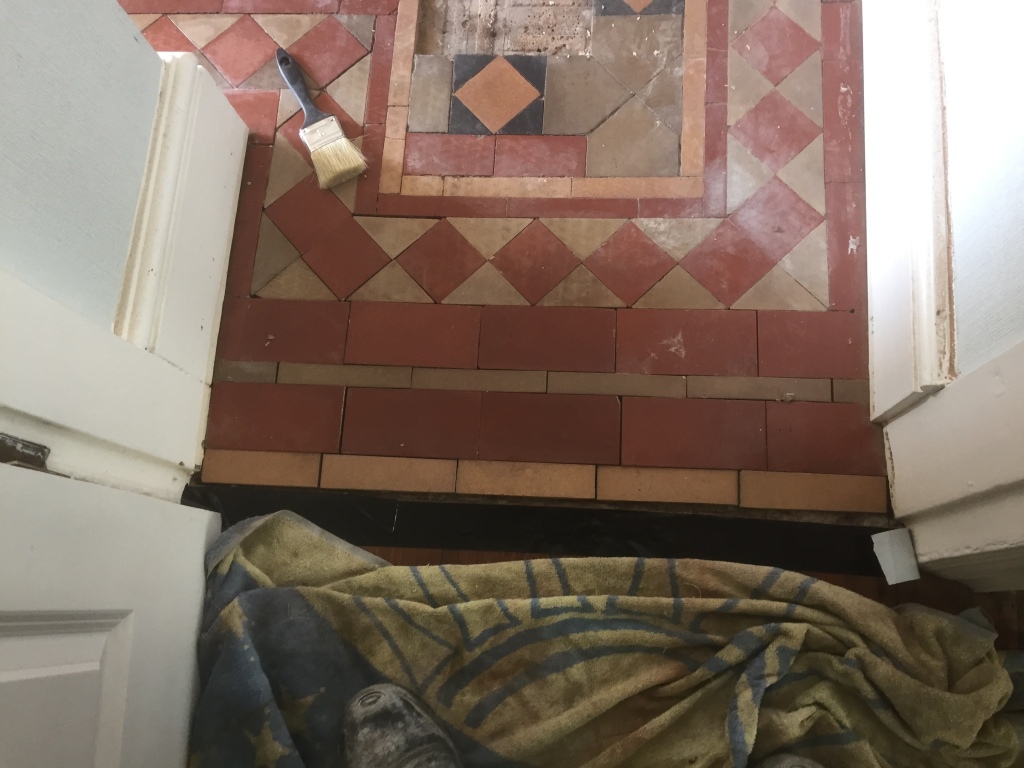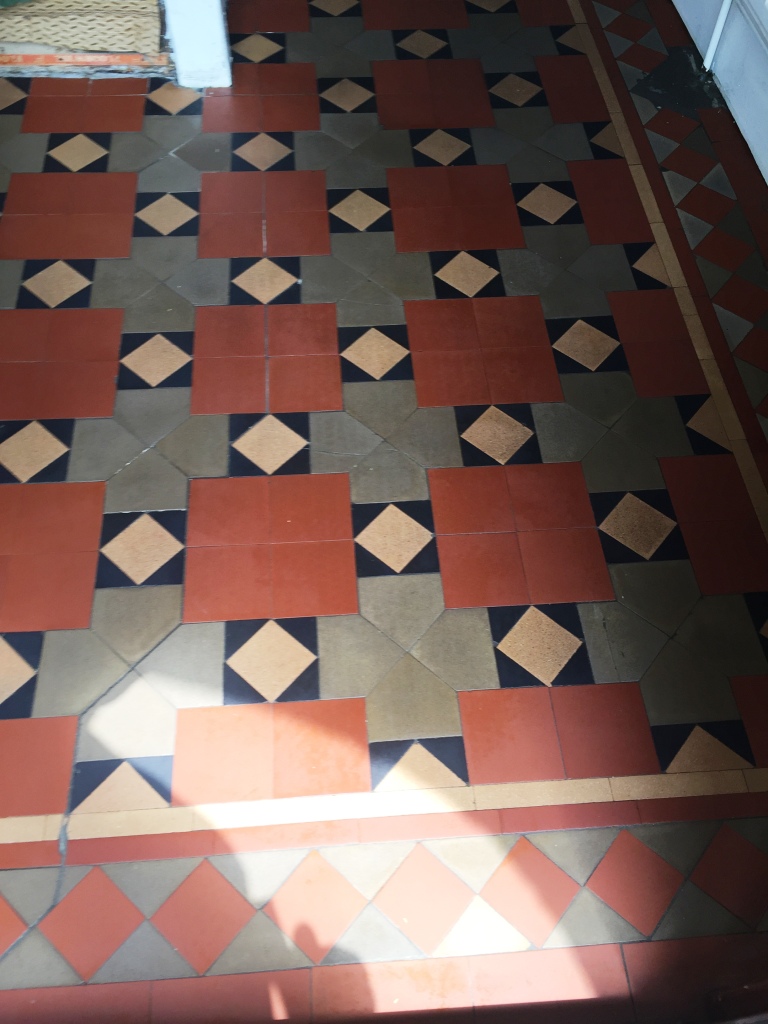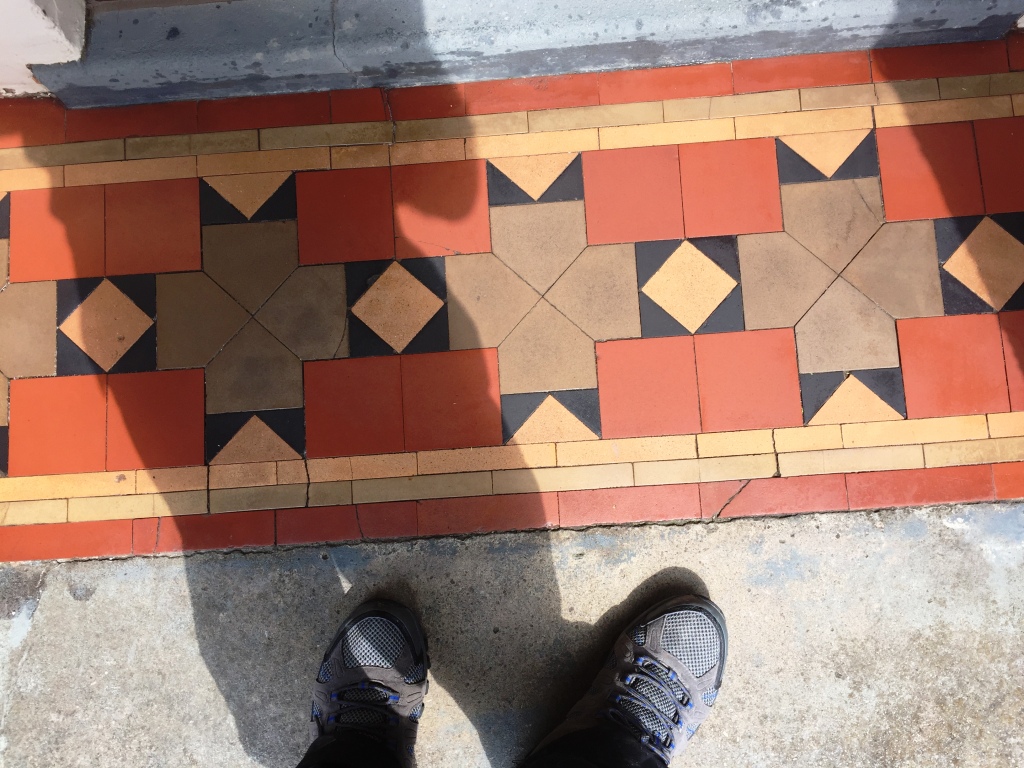It’s a wonder why any property owner would want to cover an original Victorian tiled floor but I guess it was the fashion at the time. Fortunately, times have changed and home owners are now looking to restore original features back to their property as they bring a real sense of character and personality, especially if the tiles laid are colourful and have interesting design patterns.
In this case the former owner of this house in Coundon near Coventry had opted to hide the fantastic hallway and doorway Victorian tiles with carpet some 15 years earlier. Now, the new owner was keen to restore the floor as an original feature.

The tiles weren’t in great shape to begin with. In several areas there was a need to reaffix or entirely replace some loose and damaged tiles. Needless to say, the tiles which has been hidden by carpet for many years were in dire need of a thorough clean and fresh seal, and there were areas where mineral salt deposits had emerged over time. A full restoration would require me to address all of these issues – here’s how I did it.
Cleaning and Repairing a Dirty and Damaged Victorian Tiled Floor
Prior to starting a deep cleaning process, I ensured the damaged and loose tiles were carefully replaced and re-grouted. Fortunately, over the years I have built up a nice collection of spare Victorian tiles so sourcing replacements for the broken ones was not a big problem.
 |
 |
Then, to clean the tiles, I applied a strong cleaning solution consisting of Tile Doctor Remove and Go, which helps to remove any old sealers, and Tile Doctor Pro Clean, which deals with any ingrained dirt and general muck afflicting the tiles.
To help with the cleaning – especially in regards to the aforementioned minerals salts issue – I applied Tile Doctor Acid Gel, which is a blend of phosphoric and hydrochloric acids in a handy and easy-to-apply gel form. When worked into the tile using a black scrubbing pad, the Acid Gel successfully neutralised the alkaline-based salts. To finish off the cleaning process, I steam cleaned the floor, soaked up any excess moisture with a wet vacuum, and installed fans to speed up the drying process.
Sealing a Victorian Tiled Floor
The next day the tiles were dry and ready to be sealed so I wasted no time and started the application of several coats of our impregnating sealer Tile Doctor Colour Grow. As an impregnating sealer, Colour Grow penetrates and fills the pores of the stone to prevent dirt from becoming trapped. This makes it easier for the property owner to keep the tiles clean in future.

Colour Grow also provides the added benefit of enhancing the colours in the tile, making them more vibrant and characterful. The natural matte finish left by Colour Grow was exactly as the customer requested. At the end of two days work I left the house with some revitalised Victorian tiles and a very happy customer.

Source: Victorian Tile Restoration Service in Warwickshire
Mick Gayton is an agent of Tile Doctor, the largest Tile and Stone cleaning network in the UK who have developed the products and techniques to handle a multitude of issues surrounding tiled flooring including stone and grout.